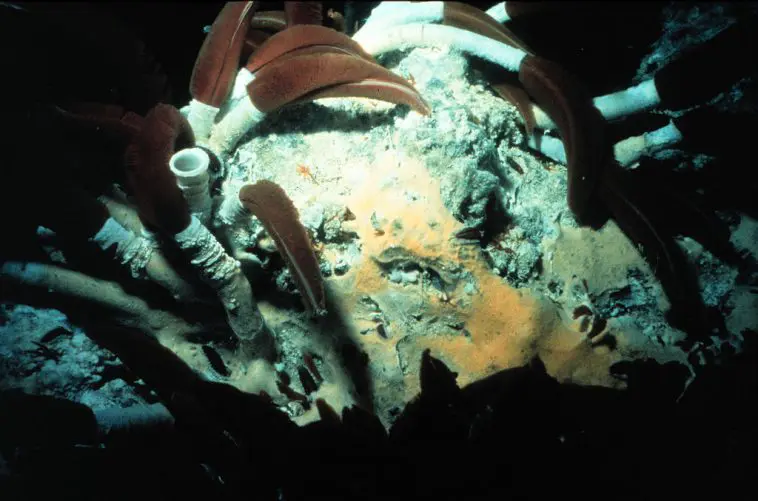[Originally published in 2014 as New Record Set for Soft Tissue in Fossils]
Sabellidites cambriensis is an animal that we know only from the fossil record. It is thought to be a worm-like creature that built its own tube in which to live. Its fossils are found in Ediacaran rock, which is supposed to be on the order of 550 million years old. Evolutionists are interested in studying organisms from this rock because they are thought to be the oldest multicelled animals. The problem is that there are other fossils of tube-forming animals in the same rock, so it is difficult for evolutionists to tease out the supposed relationships between S. cambriensis and similar animals alive today.
To better understand S. cambriensis, a group of paleontologists examined several fossils using electron microscopes, X-rays, and spectrometers. Their analysis indicates that the structure and layering of the fossils’ tubes are similar to that of an existing group of animals known as beard worms,1 an example of which is shown above:
These are beard worms. They live on the ocean floor, typically near hydrothermal vents, methane seeps, or the carcasses of whales.
As a result, the authors conclude that the S. cambriensis fossils represent ancient forerunners of the beard worms. This presents a bit of a problem for evolutionists, however. As the authors note, using molecular clock estimates, it was thought that beard worms didn’t evolve until about 126 million years ago. Since the fossils the authors studied are supposed to be about 550 million years old, their analysis says that the molecular clock estimate is off by almost a factor of four!
However, I think these fossils represent an even bigger problem for evolutionists.
In the paper, the authors note that portions of the fossil are not mineralized. In other words, they are still soft. As the authors report:
The Sabellidites organic body is preserved without permineralization. Minerals have not replicated any part of the soft tissue and the carbonaceous material of the wall is primary, preserving the original layering of the wall, its texture, and fabrics. Moreover, the fabrics, observed in STEM/SEM/TEM (see below), are fibers composed of resilient organic matter embedded in a less resilient organic matrix (Fig. 2.2) that may be dissolved thereby exposing fibers on fractured surfaces (Fig. 2.3-2.6).
NOTE: “STEM/SEM/TEM” refers to different electron microscope techniques.
In the figures to which the quote refers, you can see fibers that are less than 0.5 millionths of a meter wide! So these delicate fibers have supposedly stayed soft for 550 million years! As far as I know, this sets the record for how long you have to believe soft tissue can survive if you want to hold to the standard geological timeline. It’s staggering enough to think that soft tissue can survive for 50-80 million years, as other fossils have demonstrated (see here, here, here, and here, for example). Now that’s not enough. To believe the standard geological timescale, you now have to believe that delicate strands of it can survive nearly ten times longer!
That’s not the end of the story, however. The authors were able to identify chitin in one of the fossils. This molecule is made by many living organisms today, and it has been found in other fossils as well. More than three years ago, I discussed the fact that it had been found in a scorpion fossil that is supposed to be 417 million years old. Well, the fact that it has been found in one of the S. cambriensis sets yet another record. As the authors state:
The S. cambriensis example extends the record of chitin preservation (Cody et. al., 2011) by some 130 Ma.
As a chemist, it is hard for me to understand how soft tissue and modified polysaccharides like chitin can survive for hundreds of millions of years. It is much easier for me to believe that these fossils aren’t nearly as old as the standard geological timescale indicates.
Reference
- Moczydlowska, M., F. Estall, and F. Foucher, “Microstructure and Biogeochemistry of the Organically Preserved Ediacaran Metazoan Sabellidites,” Journal of Paleontology 88(2):224-239, 2014.






